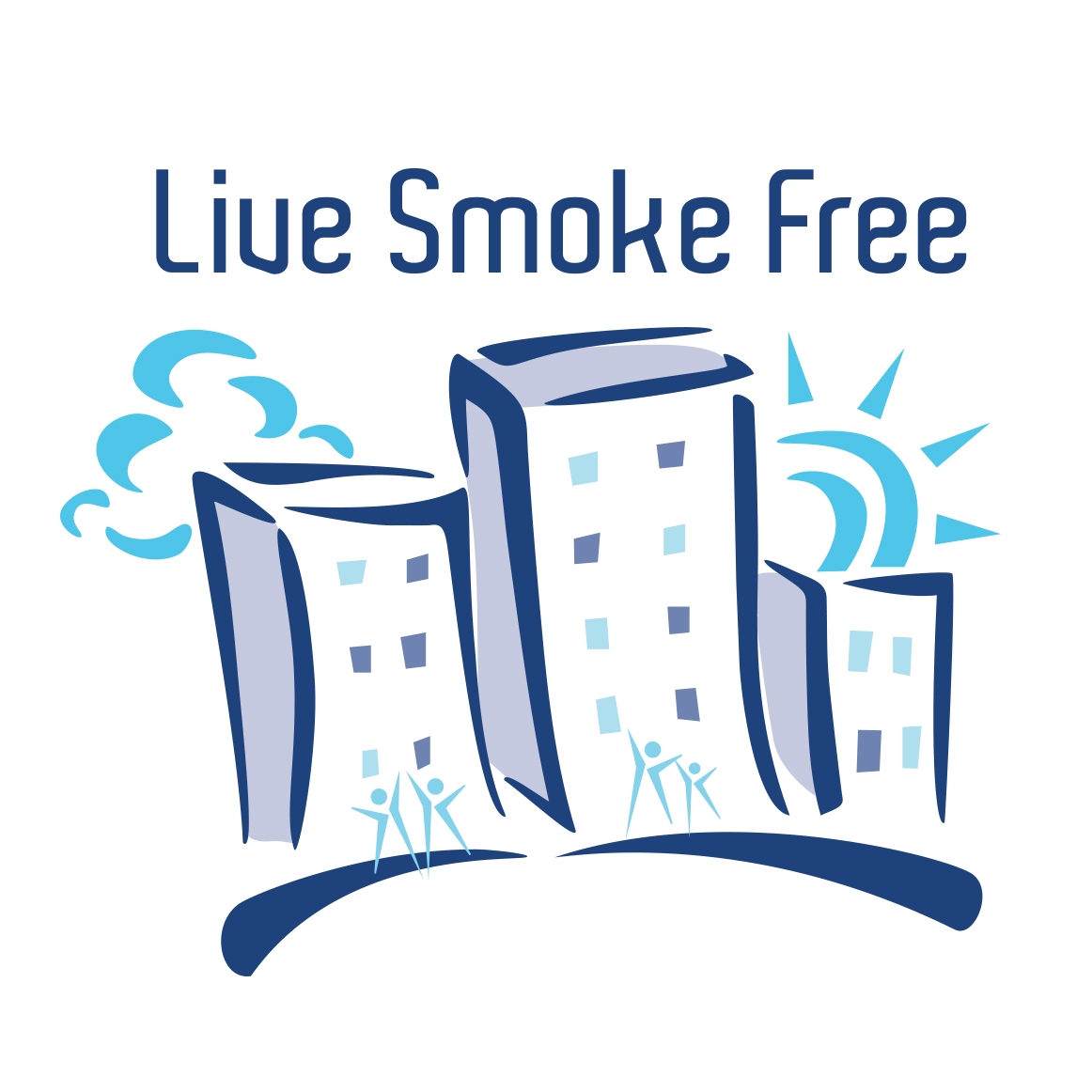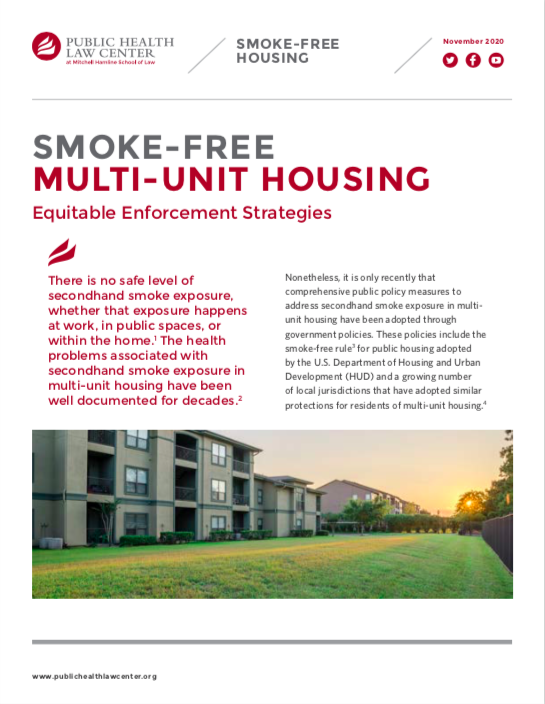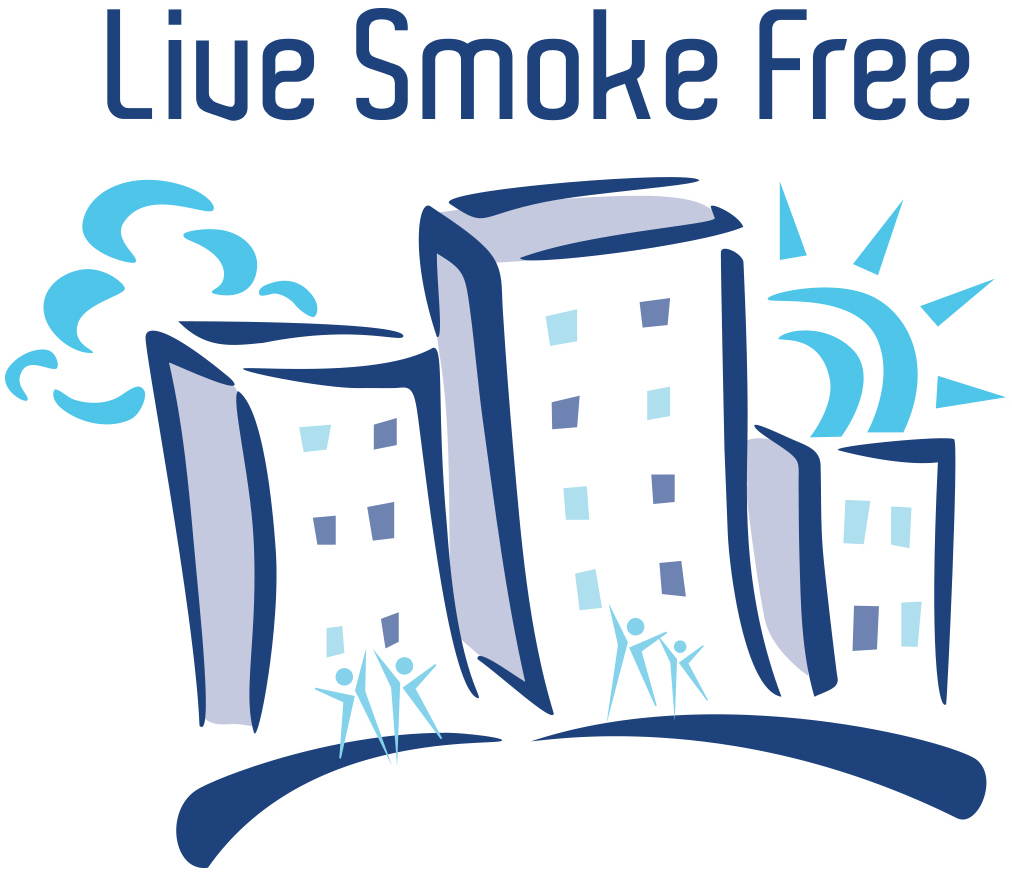
Public Health Common Ground: Smoke-Free Housing and Pandemic Eviction Moratoria
By Rachel Callanan, J.D., M.N.M., Senior Staff Attorney, Public Health Law Center
Smoke-free housing is more important than ever during this pandemic as more people are working from home, spending their leisure time at home, and distance learning. It is common knowledge that there is no safe level of secondhand smoke exposure; a health threat that is particularly concerning given that COVID-19 is a disease affecting the lungs.
Tribal, local, state, and federal levels of government are making decisions about how to best protect residents from further spread of the virus. One almost universal tactic in fighting the spread of the virus has been to enact measures that protect against eviction. These eviction moratoria ensure that residents of rental housing can remain in their homes when, in other circumstances, they may have been susceptible to eviction. Many states and even more local jurisdictions enacted eviction moratoria during the height of the pandemic response in the spring of 2020. Many of these measures expired over the summer causing significant challenges for those who were facing eviction to find new housing. But many state and local eviction moratoria are still in effect or are being reenacted in response to the resurgence of the COVID-19 virus this fall.
Eviction moratoria have ranged in their protections from temporarily prohibiting evictions for nonpayment of rent to more comprehensive protections against eviction. An example of a comprehensive moratorium is Minnesota’s prohibition against eviction except where there are serious safety concerns. A good source of information on the federal and state-level eviction moratoria is Eviction Lab.
The public health goal of each of these eviction moratoria was to promote housing stability in these unprecedented times. This will help minimize spread of the virus and reduce homelessness during the pandemic-induced economic crisis. A shared goal behind eviction moratoria and smoke-free multiunit housing policies is to promote housing stability. In the case of smoke-free housing, housing stability is promoted by ensuring residents can live in a smoke-free environment.
Those working on smoke-free multi-unit housing are likely familiar with the term “graduated enforcement.” This is a method of enforcing smoke-free multiunit housing policies by including several steps in enforcement, with eviction considered only as a very last resort. A graduated enforcement structure helps ensure better compliance with a smoke-free policy by providing multiple steps for enforcement and providing the opportunity for residents to change their behavior before infractions rise to the level of lease termination. A graduated enforcement structure allows for tenant education and the provision of cessation resources throughout the enforcement process. The goal of graduated enforcement is to gain compliance with the smoke-free policy.
Violation Enforcement
The eviction moratoria in states and local jurisdictions present an opportunity to revisit a property’s graduated enforcement structure and to strengthen the non-eviction remedies available for enforcement of a smoke-free policy. This sample graduated enforcement language is from the Public Health Law Center’s Model Smoke-Free Lease Addendum for Minnesota (2020):
- The first violation shall result in a verbal warning and reminder of the smoke-free policy.
- The second violation shall result in a verbal warning and provision of smoking cessation resources and materials.
- The third violation shall result in a written warning and provision of smoking cessation resources and materials.
- The fourth violation shall result in a notice to vacate with an option to remedy/cure, and provision of smoking cessation resources and materials.
- The fifth violation may result in a 10-day notice to vacate without the option to remedy or cure.
Nicotine Dependence and Cessation
Support with nicotine dependence and cessation resources are a crucial part of the graduated enforcement process. Property owners and managers can connect residents with free cessation resources, including:
- State Quitlines:
- All states have quitlines with counselors who are trained specifically to help smokers quit. Call this number to connect directly to your state’s quitline (hours of operation and services vary from state to state): 800-QUIT-NOW (784-8669).
- Visit the North American Quitline Consortium website and click on your state.
- The National Cancer Institute cessation website contains tools and tips to quit, including smoke-free texting programs, information on nicotine replacement therapy, smoke-free apps, and building your own quit plan. The National Cancer Institute’s trained counselors provide information and support for quitting in English and Spanish. Call Monday through Friday 8 a.m. to 8 p.m. CST at 877-44U-QUIT (877-448-7848)
- The Centers for Disease Control and Prevention website provides information on quitlines, apps, texting support, developing a quit plan, and much more.

More Resources
Please visit the Public Health Law Center web site for more smoke-free housing resources where you can access our new resource:
Smoke-Free Multi-Unit Housing: Equitable Enforcement Strategies (2020).
Live Smoke Free, a program of the Association of Nonsmokers Minnesota also has many resources on how to go smoke-free and Smoke-Free Housing Recommendations During COVID-19.
Supported by funding from the Robert Wood Johnson Foundation.
